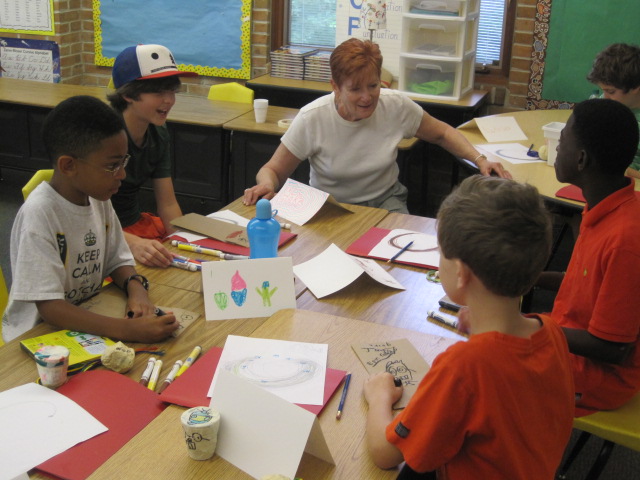

Today we’d like to introduce you to Susan Orloff, BS.ED, OTR/L, FAOTA.
Susan, can you briefly walk us through your story – how you started and how you got to where you are today.
How I got to be an OT?
I am originally from Washington, DC; not Maryland or Virginia, but 16th Street Washington, DC.
I grew up with the Smithsonian almost in my backyard (actually a bus ride away) and a love of history that remains a passion of mine today.
In high school as a senior, we had to do “community service.” I applied for and was accepted to be an aide at the Smithsonian! A dream placement even if it was going to be dusting off bookshelves and being a ‘go-fer’. I was ecstatic!! It was an after-school assignment and it was all I could think about all day long.
Just as the dismissal bell was about to ring, a girlfriend came bounding down the hall shouting, “Susan, wait!” As my friend explained that she was going to a nearby home for retarded and handicapped children (an acceptable phrase in 1964) and wanted me to come with her because my father’s offices were, ‘close and we could get a ride home together’ my dreams of historic dust were floating away.
Having a hard time saying ‘no’, I said: “OK, but just this once.” So, off my friend and I went.
The facility all-purpose room was crowded with children of various degrees of disabilities. I was assigned to a little seven-year-old red-haired boy (I have red hair) named Tyler. He had severe Cerebral Palsy and was confined to a wheelchair. He drooled, he wore a diaper, and he had difficulty using his hands. We ‘played’ and when it came time to go, I was resolute, that next week I’d be at the Smithsonian.
Except for the following week, again my friend accosted me in the hall to ask me to come with her “just one more time.” And I went. When I arrived, Tyler greeted me with a very labored drawn out, “Hhhhhhiii Suuuuussannn.” His aide told me that he had been practicing all week to greet me. All I could think about was, what if I hadn’t come back? So, I completed my community service at the facility and stayed in touch with Tyler throughout most of my studies at a local university.
I switched my professional goal from historian to a special education teacher and then eventually to an occupational therapist and have not looked back. Academic teaching seemed a bit out of touch with the immediate needs of these children. Occupational Therapy addressed more basic needs: how to dress, eat, play, and self-organize/regulate using games and activities that communicated achievement without the competitive stress of grades and peer approval.
My life is not about studying history but “my children and I” make history every day!
Has it been a smooth road?
The academic requirements were rigid: anatomy (with a whole very real cadaver), physiology, neurology, etc. At the time, I was starting my journey into Occupational Therapy there were only seven graduate OT programs in the country. At the University of Pennsylvania, OT students took the medical sciences side by side with first and second-year medical students, physical therapy students, and nurses.
My observations in various OT clinical settings did not alert me to the academic intensity this course of study required. However, I persevered, graduate, took my boards (passed on the first try!), and started on my professional dream.
Working in hospitals, clinics, and schools, I gained a lot of experiences that continue to sustain me and guide me.
I decided in 1990 to start my own business. I thought, there are OT’s in public schools, why not private ones as well.
Investigating these possibilities required my making lists of schools, their directors, setting up 1-1 visits, offering free in-services to the faculties and low-cost screenings to the families at the various schools.
This was a long slow process that took about two years to complete to get the word out into the public arena.
Today, OT’s in private schools are commonplace, but being the first had its pitfalls. Some parents rejected the concept because of the word “therapy” and asked me to call it “something else”. Defining what I do was another stumbling block. I was often asked, “Why can’t I just hire a tutor?”; “Why do you cost more?”; “Can’t you just show him/her what to do 1 or 2 times?” Resistance, anger and finally acceptance at finding and explaining what was the ‘glitch’ in the child’s learning issue was for both parents and me a delicate lesson in patience and empathy.
So let’s switch gears a bit and go into the Children’s Special Services, LLC story. Tell us more about it.
I think my Mission Statement summarizes this very well:
Children’s Special Services, LLC.
Mission Statement
It is the mission of Children’s Special Services, LLC. to
provide quality care to both parents and children.
This is not a job for us. It is a calling.
It is a privilege to contribute to the developmental process
of your child.
We consider it our responsibility to help
assure that the children in our care acquire the social, emotional, and physical
skills necessary for successful growth and maturity.
We believe in potential.
We strive to motivate.
We understand that change is never easy and that growth is sometimes
painful.
Our goal is to help facilitate the self-structuring of personal goals.
We understand the grief of missing the goal.
We know that parents hurt as much as
the children do, and sometimes more.
It is our mission to help children confront and conquer their fears
and find joy in the process of becoming.
We recognize that change comes from within,
it cannot be imposed upon anyone.
Every family is sovereign.
Every child precious.
We honor the trust you have placed in us.
Beyond the Mission, is the fact that each child, each family is “my family.” I am here to guide the family. I require that a parent (or guardian) be present at each session because what I do is not ‘magic’ and helping the parent apply OT skills at home is an integral part of the therapy process.
I am available to help the child in the school setting obtaining needed accommodations and support services. I have a wide referral base to help families get to other professionals as well.
How do you think the industry will change over the next decade?
The origins of Occupational Therapy date back to the end of WWI when soldiers were returning from war with devastating injuries. These men and women needed to learn a new life and occupational skills; hence the name, Occupational Therapy.
Living is the most basic of occupations. It encompasses everything we do from getting out of bed in the morning, self-care, going to work or school and getting back home at night.
The profession of Occupational Therapy is a dynamic field. OT’s once limited to standing institutions, OT can currently be found in outreach centers, community mental health programs addressing the needs of individuals throughout the lifespan.
With children, OT provides programs inclusive of but not limited to nutrition, obesity, bullying, sensory integration, visual-motor processing, substance abuse, childhood depression, vocational guidance, parent education and more.
In and of itself these are huge changes. OT once ‘relegated to those craft ladies’ without professional licensure until about the 1970s, it is now a strong influencer in both federal and state regulations for the provision of medically based evidenced-based services.
Pricing:
- Our basic initial/ consult screening rate is $420 Hourly treatment rates are at $150/ hour. Our evaluation rates depends upon the needs and the age of the child.
However, in the Greater Atlanta Area other customary rates can range between $550+ for a screening consult to $1800-2000+ for a comprehensive evaluation and individual sessions can range between $169-$180+ per treatment hour. - Children’s Special Services, LLC keeps costs below area averages to make services accessible to families
- Evaluative services (inclusive of a written 10-15+ page report with goals and analysis) can range from $550 for an early childhood screening, $750-$1100 for children older elementary through middle school, and
- Individual therapy sessions are billed at $150/hour with all material fees included
- IEP and 504 assistance is billed either hourly or on a service-based fee after discussing needs with the family
- Consultative fees are billed at the hourly rate of $150/hour
- Facilitator Certificate Course offered on a 1-1 instructional basis /significant for individuals who are seeking a facilitator position, want to enhance their skills or learn how to help their children with academic learning, (please call for more information)
Contact Info:
- Address: 7501 Auden Trail
Atlanta, GA 30350 - Website: www.children-services.com
- Phone: 770-394-9791
- Email: susanorloff@childrens-services.com
- Facebook: Children’s Speical Services, LLC
- Twitter: OTRLovesKids
- Yelp: https://www.yelp.com › Health & Medical › Occupational Therapy
- Other: https://childrens-services.com (Google)








Image Credit:
All pictures with permission taken by Children’s Special Services, LLC staff
Getting in touch: VoyageATL is built on recommendations from the community; it’s how we uncover hidden gems, so if you know someone who deserves recognition please let us know here.



















